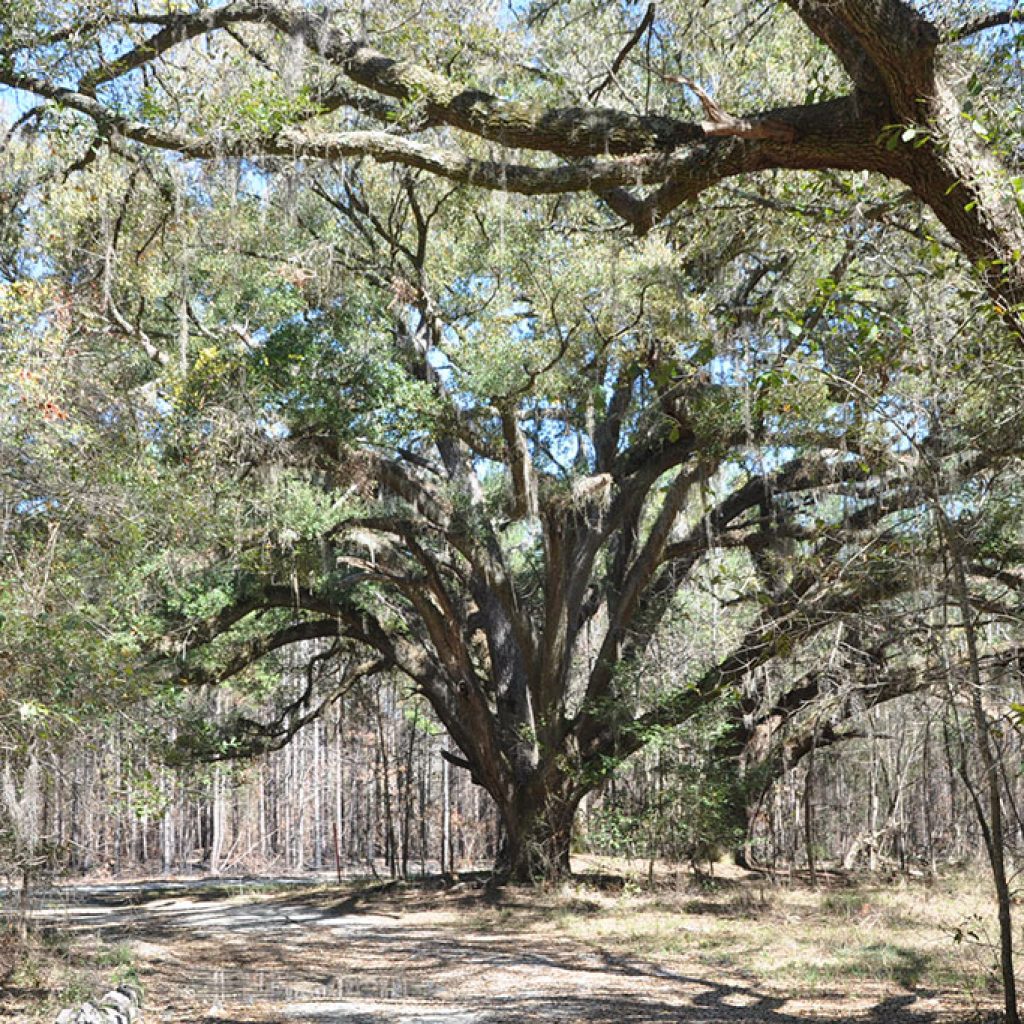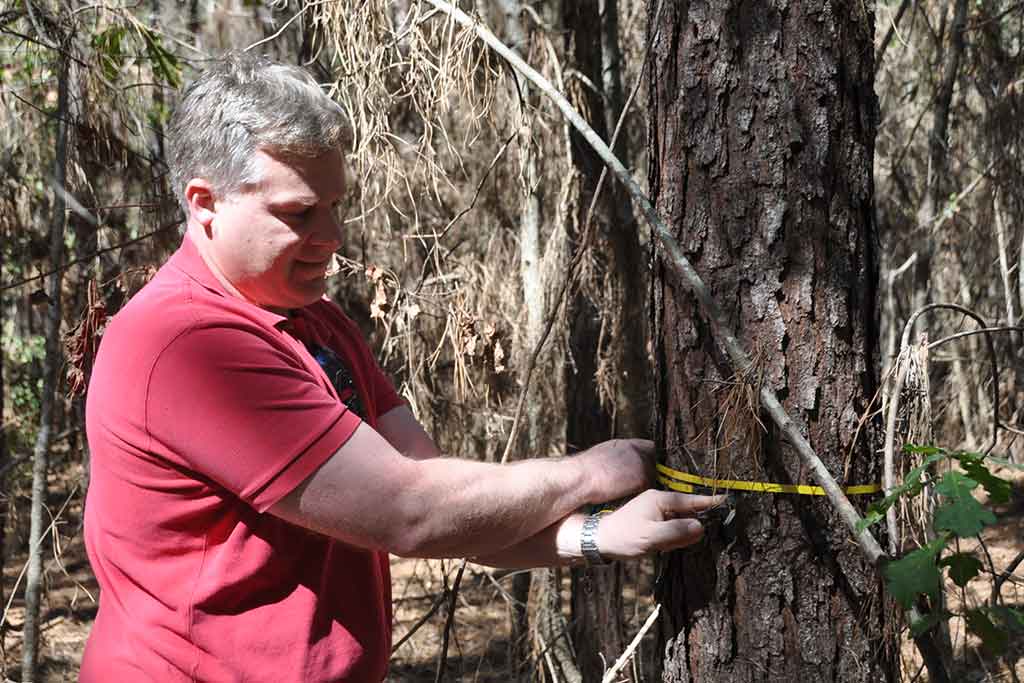Forest by Conviction
For thousands of years, forests have been an important source of livelihood for mankind. It is our responsibility to ensure that the forest retains its strength for all future generations. Not only do the forest supply people with wood, they also purify the air and are the largest CO2 storage on Earth.
Our goal is to preserve the full efficiency of the forest in a sustainable and careful way, and to generate positive yields for our clients by means of the forest’s natural power. For this reason, our emphasis is on professional management that is adapted to the forest's location.

Forest significantly strengthens a portfolio, especially in the mid- and long term. The growing world population and the rising standard of living in many parts of the world are continuously increasing the demand for wood. Land offers additional diversification, very low correlations to the other asset classes and high inflation protection.
Above all, however, it is a green, CO2-neutral and, in the truest sense of the word, SUSTAINABLE investment.
Therefore, in many regions of the world, forests are an integral part of the capital investments of families and other investors.
IN PRINCIPLE, THE OPPORTUNITIES FOR THE FORESTRY SECTOR ARE DIVIDED INTO THREE MAIN AREAS: CLIMATE, INFRASTRUCTURE/MARKET AND PROPERTY RIGHTS.
The North American continent has different climate zones and thus significantly different conditions for forest growth.
Due to the subtropical climate, high precipitation (> 1,200 mm p.a.) and a long vegetation period, the growth rates in the Southeast region of the USA are significantly higher than in the other regions of North America. This allows a rotation period of only 25 years for the Southern Yellow Pine. The Southeast is, therefore, best suited for the large-scale production of biomass, and has excellent characteristics to meet the ever-increasing demand for construction and pulpwood in the future.
The northeastern USA has a temperate climate comparable to that of Central Europe. Maple, yellow birch, cherry, white pine, spruce and fir grow here, forming species-rich mixed forests. The aim of management is to grow as much high-quality wood as possible.
In the Northwest region of the USA, high precipitation and very good soil conditions ensure optimal growing conditions for coniferous wood.The Douglas Fir, in particular, is characterized by high growth rates and good qualities. The proximity to the Pacific coast offers optimal opportunities for exporting the harvested timber to Asia, where demand is constantly growing.
The excellent infrastructure in all regions, and a large number of wood processing companies, ensure direct sales of the raw material produced.
IN CONTRAST TO CLASSIC REAL ESTATE, THERE ARE NO RECURRING INVESTMENT COSTS IN THE FOREST: AFTER ACQUISITION, THE FOREST PRODUCES FOREVER ON ITS OWN ACCORD DUE TO ITS BIOLOGICAL GROWTH. THUS, ONCE PURCHASED, ADDITIONAL INVESTMENTS ARE NO LONGER NECESSARY:

Sustainability
The concept of sustainability originates from forestry. Hans Carl von Carlowitz (born on 24 December 1645 in Oberrabenstein, Germany) formulated the principle of sustainability with a view to forest management:
" the economic news and instructions for the natural growing of wild trees, besides thorough explanation how with gods good will the ever stronger scarcity of timber is to be managed by sowing, growing and planting of seedlings, also through wild and planned cultivation of a once cut and barren land can again be made useful as timber land - through the collection of seeds from seed trees, the preparation of soil for sowing and the care of seedlings. Besides, how to multiply the timber harvest at every stage of growth, the types of broad-leaf and needle trees and their seeds, also how to manage foreign kinds of trees, and further how to fell trees and make charcoal or other uses from the wood. To be the best utility for the heating, building, brewing, mining and smelting activities requires the careful management of sustainable forestry resources.” (pp. 105-106 in the "Sylvicultura Oeconomica")
The sustainable management of the land entrusted to us has been, and continues to be, our guiding principle. In the long term, the forest should produce at least the same yields for all future generations as it does today.
All our forests are certified. We collaborate with the following three partners: Sustainable Forestry Initiative (SFI), American Tree Farm (ATF) and Forest Stewardship Council (FSC).
Timber Markets
There is strong demand for wood and wood products such as building materials, paper, cardboard, etc. Demand continues to rise due to population growth and the increasing standard of living, especially in emerging markets:
- The USA is the world's largest timber producer and customer. US saw timber is used extensively in US house building. The Southeast alone accounts for 16% of global timber production.
- China cannot meet its own demand; as a result, China imports a great deal of wood from the USA.
- Europe is demanding wood as well as increasing amounts of pellets from the USA.
- The Southeast region of the USA is gaining increasing importance for wood production in the USA and Canada. A good indication of this is the strong investment in sawing capacity in the Southeast, especially by large Canadian sawmill companies.
- Due to this demand situation, timber prices are expected to rise as soon as the oversupply of inventory (built up after the financial crisis of 2008) have been reduced.




